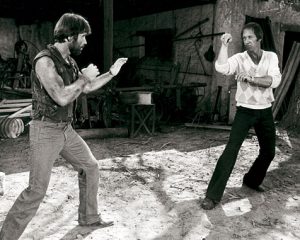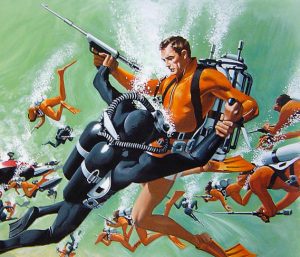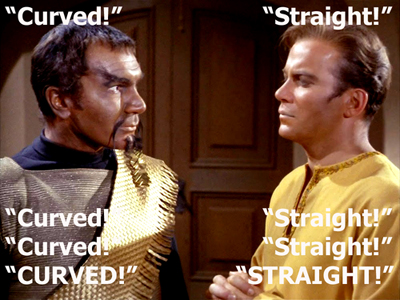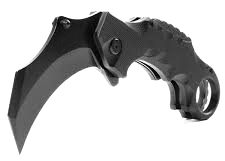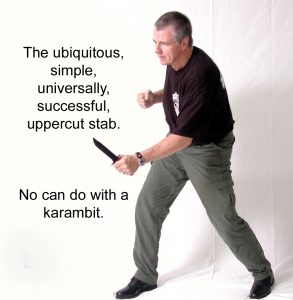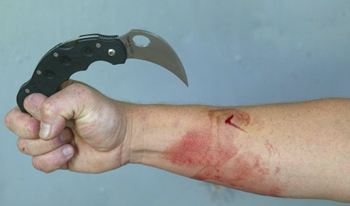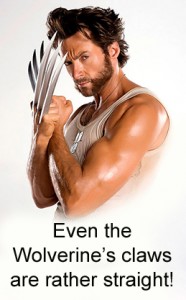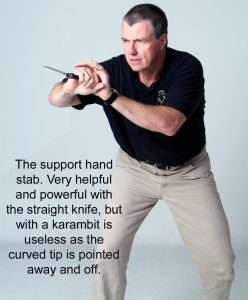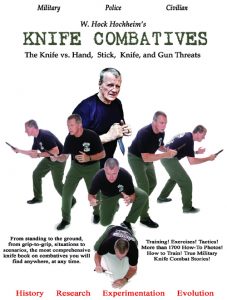Tag Archives: star trek
The Karambit Gambit Handicap
There’s an old story going around about me and a karmabit. The tale goes that during a seminar, lunch break, in the 1990s, a guy walked up to me and showed me his karambit, and I looked at it, opened a nearby window and threw it out the window of a two-story building. This isn’t true. I would never do that to a guy’s property. I can say confidently that not only would I not be so rude as to throw his property out a 2-story window, I would never throw my own karambit out a window either – because I would never own one in the first place to toss it.
You know, the curved-bladed knife that looks like a single animal claw. Some folks think they are God’s gifts to knives. And I am shown, and I get to see, way too many karambits. I see photos and photos of them in the web. God, they look cool. All kinda’ science-fictiony, Klingon-like. Deadly. Tiger-paw looking. In fact, I have come to believe that, they are so scary looking because they remind us of animal claws of critters we are naturally afraid of.
Straight, bent, curved are the choices. The curve of the knife. How curved must one be to qualify? Quite a bit. The more curve, the worse. There are knives on the market that have some bend to them, some just a slight bend, bended/angle. You know one when when you see one.
What did they tell us in elementary school years ago, when writing an essay? “Contrast and compare.” Then what of the Karambit Handicap. It’s a gambit. I hope I can leave this up here on the web as a source for people with these questions for me and questions in general about the true value of the curved knife in the big picture of use, simplicity and survival. I hope I can offer some reasoning and answers about the subject. The following are my personal beliefs and how I have come about them. If you love you some karambits? That’s fine. Enjoy a happy, healthy life. I hope you NEVER have to use one, (or any knife) in any fight.
First, before the hate mail comes in, understand my self-defense-only mission. I don’t collect knives and guns, no more than I would hammers and screwdrivers. But, being in the business of knife instruction, I am often shown karambits and asked questions about karambits. I can honestly proclaim I have never seen a karambit I didn’t think was very, very, cool looking.
Now look, you can cut somebody with a torn-open, tin can top. I also don’t want to be attacked by anything sharp. Broken glass bottle. Nope. A spear? Hell no. A Karambit? Good God, no. But the question remains is, yes, while a tin can will cut you, is it the smartest thing to use? Do we need the Tactical Tin-Can course? No. Think of this on a scale. You must get a knife. Get the best, versatile knife. Like a straight knife that stabs with deep efficiency potential and slashes without getting stuck in bodies and some clothing and can also, easily perform dozens of handy, life-saving and survival chores from chopping wood to cooking.
As a questioner, as a skeptic, never a fan-boy, not naïve, I just don’t fall for worshipping a system-head or a system. It’s a recipe for potential mistakes and failure. If you never question your revered leader, you fail to evolve. So does he and the system he does. Or folks never question gear of the revered. Do you think you must fight with a Klingon knife because you worship the culture, look, feel and history of Klingons? Or are you really looking to carry, fight and survive with the best, most versatile, edged weapon? Are you so mystified by a culture that you can’t see the faults? I know Systema people who like it so much, they start believing in and supporting Communism. I know Kung Fu people who change their religion west to east. Communism and Zen Buddhism should have nothing to do with kicking a guy in the nuts or selecting the best knife. If you want to learn how to fight with hands, sticks, knives and guns? Keep hero-worship OUT of the picture. Keep system worship out of the picture. I think this imperative.
Am I just so untrained and dumb in the wild and wooly ways of the karembit? I frequently get hate mail over this from fan-boys and faddists. Someone will always suggest that I am ignorant and suggest that maybe I should take a real, karambit course from Dijon Scoop and see the wonders and magic of the knife. I was force-fed balisong and karambit material since the late 1980s with multiple training trips to Negros Island and Manila, the Philippines, and many times since there and here since. These knives were part of curriculum we had to learn all the way to Filipino black belt, along with a lot more of the straight knife material. (and well – just forget about the odd, opening process with the balisong. I mean, seriously, why bother? Unless of course you are a weapons-historian-collector-artison of some sort, and I am not.).
As soon as I held a karambit in my hand, it felt wrong, off taget and much of what they asked me to do was clearly unnecessary when compared to all the other straight blade training. As a former Army and Texas cop and an investigator most of my adult life, from arrests, cases and forensic training, I learned the straight knife is far superior and can do just about everything better and simpler than any curved knife, just about any time. The curve of the blade is a handicap. The more the curve, the more the handicap.
I cringe every time I see a seminar attendee with a karambit training knife. I know that this person will have an extra and harder time doing even the most simple, obvious, historically-successful knife moves. My worst-case-scenario knife training course is built to be as simple as possible, as fast and effective, with the obvious and simple tools mostly found, which are the straight blades. Curved blades complicate simplicity. I recall the first time a karambit-teer showed up in a New England seminar in the 1990s. He was a rather famous, Silat guy (great guy, very friendly) showed up with his curved plastic trainer. He had difficulty doing even the most simple, primitive knife things all day long. He couldn’t stab deep which is forensically the most successful, quicker kill method. It was plain to see that when slashing, his curve and tip would get stuck in body parts. Did he know he had to improvise and construct more steps, more “work-arounds,” to get the otherwise, simple job done . Through the years the curved blade trainees still appear in my classes. The curve group often has to pow-wow off in the corner to make a simple thing work, because they are mentally and physically confined from the curved shape of their knife. Their adaptations always involve extra work-arounds and extra training and extra movement to do something otherwise done simpler with the straight blade.
What do I mean by simple, proven moves? One quick, simple example? Studies by the Marines in 1980s – while researching World War II knife tactics in the South Pacific, the USMC study group discovered that the uppercut stab to the groin/intestines, and, or the diaphragm/heart and, or even up inside the jawbone – the common hooking uppercut was a very successful. Successful, but oddly, not really emphasized and in most cases not taught. Yet, Marines instinctively still did them. Naturally. Natural. This research led to the implementation of these very natural moves in training courses. Instinctive. Natural. Simple. Now, can you do this natural, straight knife, saber grip uppercut into these areas with a karambit. You can’t plummet a karmabit as deep and powerful into these vital parts as a saber, straight knife. The karambit will require extra training and still won’t garner the same success. All forensic specialists will list deep stabs as very deadly.
Perhaps the biggest point to me is that the human race has evolved to hunt, grow, prepare food and eat with a straight knife. Ever try to eat a steak with a karambit? Cut and butter bread? I have a friend who likes to tease me on this point and threatens to send me a video of him eating a steak with his curvy karambit. I’ll bet he can! I’ll also bet he can eat a steak with a torn, tin can too. The point is, THE EXTRA WORK INVOLVED! Not that you can or can’t, but rather – what is the smartest, easier tool to use. And we can’t forget, simple kitchen cutlery has reeked international havoc in self-defense, crime and war. In civilized countries over 99% of all knife violence is with simple, STRAIGHT kitchen cutlery. A pretty good success rate for the straight blade.
The Dueling Test. And needless to add, take a guy with a straight, blade knife in a saber grip versus a guy with karambit and let them duel. Who do you think has the advantage? Spar it out. Take two Superflys and spar this straight vs. curved karambit. I can tell you from doing that for decades and organizing/ref experience that the saber grip straight blade has the advantage. Not that dueling is the end-all knife encounter, oh no, but dueling can and does happen. And listen to this – this is telling – even the beloved Superflies still teach and use a whole lot of straight knives too! Most still teach more straight knife than curved knife. Why bother if the Karambit was God’s gift for knife work? Wouldn’t they give up on straight blade material all together?
“Oh but my Dijon! My Dijon does so many arm manipulations-catches with the curve.” Do you think you will really hook and push around so many angry, adrenalized arms with a karambit as Dojon Superfly does in a cooperative flow drill on Youtube? And by the way, a straight knife, saber or reverse grip can push and pull arms around too.
Stress Quick Draws Issues. A comprehensive knife program covers stress quick draws. It seems all modern knives now try to have some pocket catching device that facilitates a quick folder opening. But some don’t. Sometimes people get their folder out,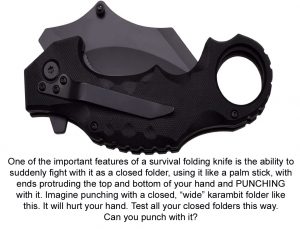
Spinning the Karambit? a simple ring in the handle alone does not a karambit make. I have seen some folks calling a straight knife with a ring in the handle a karambit, just because of the ring. No. The blade has to have a significant, curve to be one, ring or no ring. Now, to what degree of a curve, I can’t precisely say. I think you know one when you see one. The ring is for mostly for retention and…spinning. On spinning, another dubious karambit characteristic or which even the Karambit sellers page warn:
“Karambit spinning is showy, flashy and useless without significant training, practice and understanding of the application. New users should not spin karambits until they’re intimately familiar with their blade, its balance, the way it fits into their hand in various grips and while in motion AND, most importantly, until they’ve received instruction.”
Further, “…many people don’t use the smaller muscles in the hands and it takes time to build them up.”
Confessions from a top karambit salesman! And there you have it from the source. More stuff to do. More muscles to build. More unnecessary stuff to do.
Spinning and chopping off limbs with the Karambit? A friend of mine, unusually consumed by all things “distant” and eastern, oriental and Indonesian, was telling me that a butcher he knew, using a very stout, very big karambit with a sharp outside edge, could flip/spin the curved knife and chop off the limbs of large animals in his shop. It took some practice, but he could. The message for me was that the karambit could, if worked right, with the right momentum, chop off big things in a power spin. CHOP! I just nodded my head. Whatever. “TOOK…SOME…PRACTICE.” But such takes more work, awkward applications, etc. and stouter karambits with a sharp outside edge. If it were a big folder? How do you have a sharp, outside edge like this and carry it? Not in a pocket, but in a sheath…in case you know…you have to lop off a criminal’s hand. I am quite sure the butchers of the world will still prefer regular straight knives and cleavers for more efficient, consistent success. What will be this butcher’s tool of day-to-day preference. The easy one.
Is it skill-with-weapon-alone? Martial artists like to argue that all you need is skill with just about about weapon that will win the day. “Don’t be so picky, Hock! It’s the skill with the weapon that really counts.” And Captain America makes a garbage can cover a deadly weapon! The only problem with that is, none of your pupils are Captain America (or Musashi). And you are not Captain America. And if you are? At 38 years old, you won’t be at 48. “It’s skill with the weapon that counts”…this is a very martial artsy thing to say, and to over-believe. And a lame excuse that could lead to the acceptance of lesser weapons. “I’ll just work harder and forever with this one. After all, it’s not the best, but…but skill. MORE SKILL!
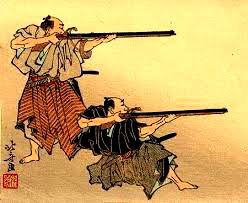
End Users. Sellers of Karambits often have much sales-pitch, yadda-yadda about the cancer-curing perfections/wonders of the curved shape. They often proclaim that just about everyone on the planet already uses, benefits and really needs the really curved knife. Everyone except the real people you see, you know, work with and read about and watch in documentaries, etc. I suggest you challenge every line of the sales pitch because in the end, it is not the selection of the practical.
Work-Mission Versatility?
- Butchers don’t use or mandate them.
- Surgeons don’t use or mandate them.
- Cooks don’t use or mandate them.
- Hunters don’t use or mandate them.
- Fishermen don’t use or mandate them.
- Soldiers & Marines don’t use or mandate them.
- People don’t use or mandate them to camp.
- Workers with real labor jobs won’t use-mandate them.
- People don’t eat with them (this is a big point).
- Prosecutors and police LOVE to see you use them.
If they are so perfect and superior for the end-user, why are they not used by all humanity almost of the time? Try giving a farmer, a factory worker or a camper just a karambit and see how long that idea lasts before they trade out for a straight blade. Give a carpet layer a karambit and he will quickly resort back to his classic carpet knife.
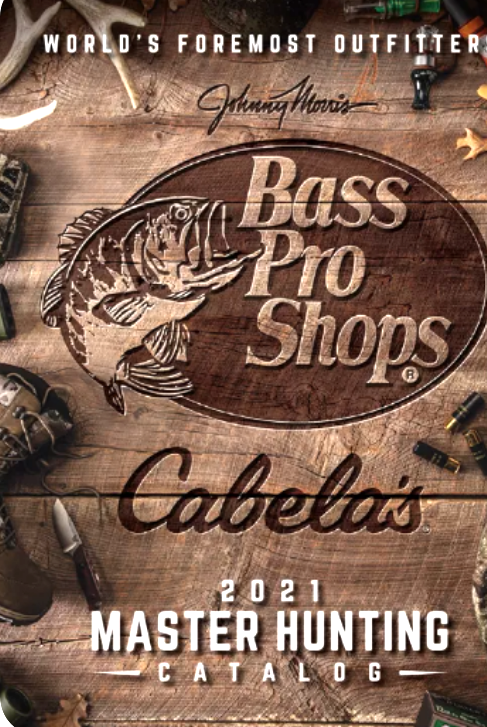
Some right-angle bends remind me somewhat of carpet knives. The sharp, 90 degree bend of the carpet knife, its position to the handle, is superior to the more curved karambits, otherwise thousands of carpet layers would have invented karambits or they would all use karambits. They don’t. Some folks, like carpet folks, work projects that require that real, sharp point and a hard, direct bend, for the maximum position of their hand grip for the job. As a detective I have worked some serious, slashing assaults involving common, carpet knife attacks.
Losing the natural, hammer grip stab. There seems to be an inert, intuitive hammer fist application with a reverse grip stab. Think of the power of just a hammer fist. It alone breaks many boards, many ice blocks, many pieces of cement. Imagine that force delivering a straight knife stab! But wait! Now hold a karambit in its reverse grip application, as in the curved end looping out of the bottom of the hand. Gone is all the hammer fist intuition. Gone is the simple, practical, stab and its extra power shot potential. .
Getting Stuck. The hooked blade, like an axe…gets stuck in people and things. The curved point is called a hook, because…it hooks. I see the karambit practitioners simulating cuts with figure 8 patterns and X patterns in the air, or in front of partners. No contact. Do they not realize that with contact, their point embeds into the person and the bones and the clothing, gear, etc.? X pattern over. Figure 8 pattern over. And now they must learn extraction techniques, unique to that knife. Extra stuff to learn. (this is also true with the tomahawk/axe craze. On first impact? THUNK! NO more slap-dash, flowy, dancy, prancy axe moves, just a big-ass axe (or knife) sunk into bone structures.
As a Karambit fan replied, “Oh yeah, not that the Indonesians didn’t use them successfully for hundreds of years… Well, Mr. Fan, what is the difference between “successfully” and something “more successfully?” We have already concluded that any sharp thing cuts. What is the best, sharp thing? Even in the Pacific, I think the karambit was a minority knife among the straight or straighter blades. And indig, Indos used some of them within whole tons of straight and only slightly curved knives and swords too.
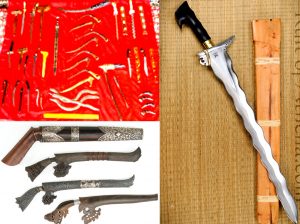
And lastly, need we discuss the legal stigma again of this Klingon-looking knife. It gets legally bad enough to use any knife for any self defense, but this knife, by its very appearance also causes negative, legal prejudices to the police, the prosecutors, the courts and to juries. Think of it in terms of pistols. Would you rather defend yourself with the “Widowmaker” pistol? Or…the “Peacemaker” pistol?” Yes, these…things…count. In a recent self defense courtroom trial, Assistant District Attorney in Texas Aaron Bundoc also said of the defendant’s self defense use of the karambit, “It was not a self-defense tool as Hernandez alleged.” He said “…a Karambit is a combat weapon designed to gut and butcher people.” Like it or not, (as with guns) or knives, the jury listened.
Look, what do I care about people, their fixations, fascinations and hobbies? Why should you care what I think? Some people love history and weapons. Perhaps you are an artisan? Some people like to crack bull whips, while the whip is on fire! Get a hobby! Get a karambit and mess with it. Do all that extra training. Place it on a rotating pedestal in your den. One in each pocket and on a neck chain. Get the t-shirt and ballcap. Follow the Dijon. Smile. Live long and prosper. These are just my personal beliefs and opinions.
For me, a karambit is a handicap to sheer simplicity and ultimate practicality. People are just too damn hypnotized by the shape, culture, history, hero-worship and system-worship. If you really contrast and compare, without bias and fixations, fandom and fads? What do you come up with? Being that we here are Force NECESSARY, and not Force UN-necessary, no karambits for me please. But please do however continue to show me your karambits. They are all very cool looking. And I certainly will not throw them out of any window. Only, you know…figuratively speaking.
______
****************
Email Hock at Hock@SurvivalCentrix.com
Get the Knife Book
Over 1,400 plus how-to photos. From standing to the ground, from grip-to-grip, situations to scenarios, the most comprehensive knife book on combatives you will find anywhere, at any time! Training! Exercises! Tactics! How to Train! Plus True Military Knife Combat Stories! 300 pages.
- Get the oversized, color text book, click here.
- Get the $10 Amazon Kindle ebook, click here
- Get the oversized black and white paperback, click here.
- Get the ebook, click here


